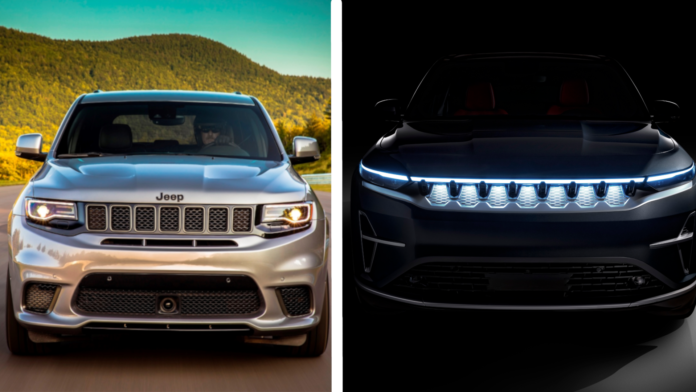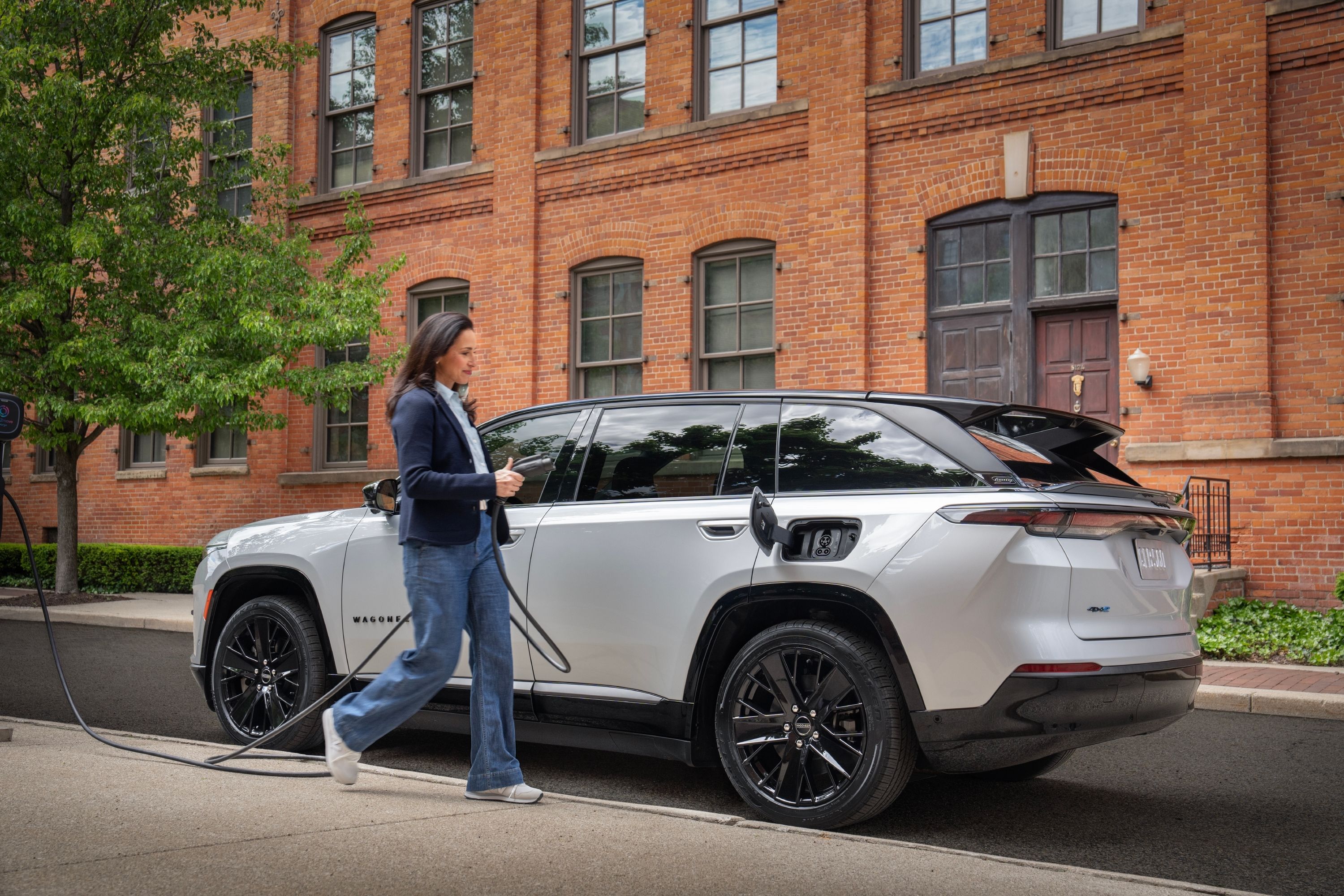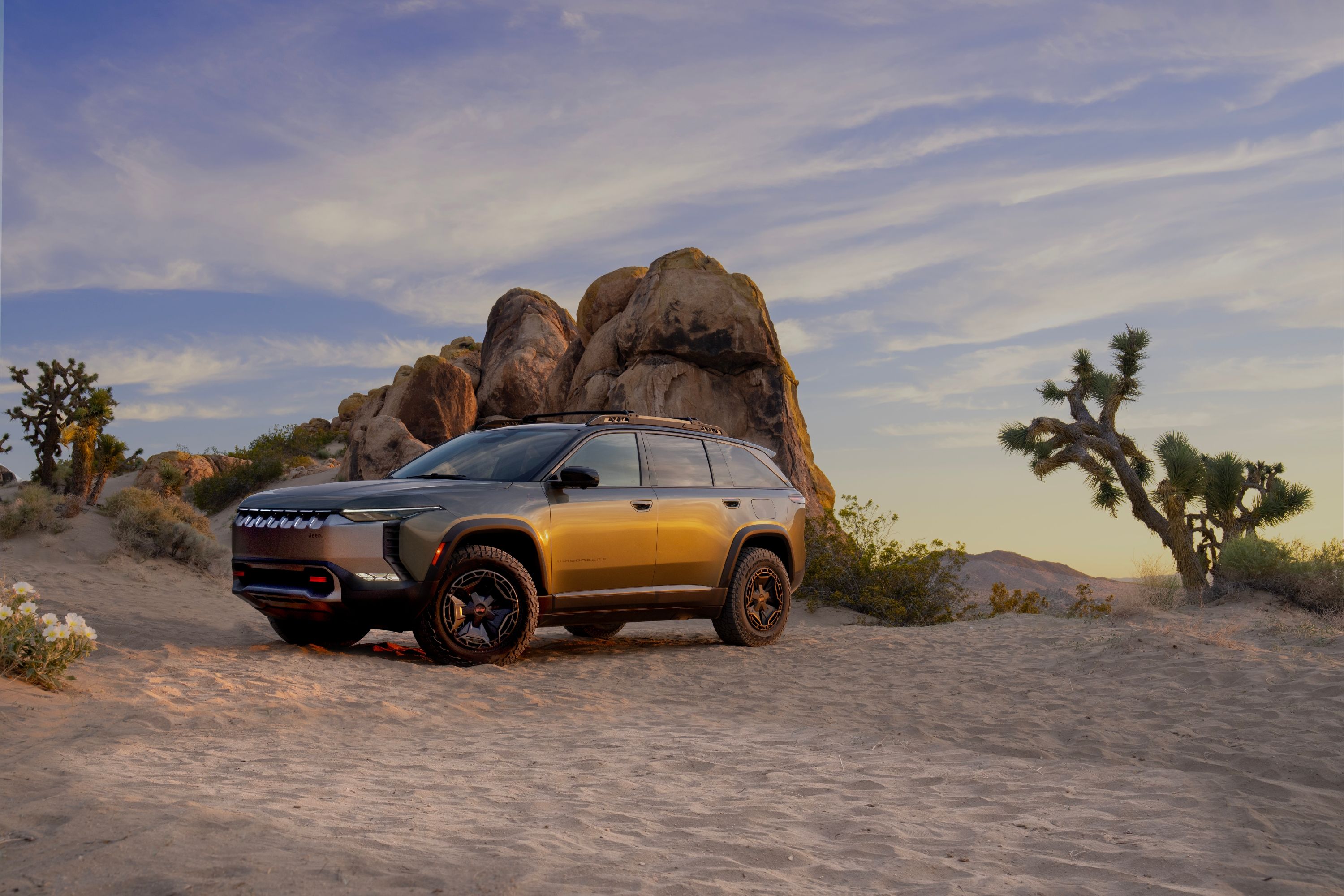The final weeks of May 2024 saw not just the start of the summer holidays in the United States, but also the release of one of the most interesting vehicles yet from the country’s domestic automotive manufacturers in the form of the 2024 Jeep Wagoneer S. Introduced alongside a Wagoneer S Trailhawk concept, the industry is now abuzz with talk of Jeep’s first foray into a fully electric vehicle, with all of their EV offerings up to this point coming from the 4xe hybrid drivetrain family. Yet while the vehicle is impressive on the whole, there is one particular facet of it that has fans questioning if it’s superior to one of the brand’s most beloved vehicles, and that is its advertised 0-60 time, which is 3.4 seconds. That makes it faster than the fastest Jeep ever made, the Grand Cherokee Trackhawk, which reached 60 mph in 3.5 seconds.
Related
Trailhawk Vs. Trackhawk: Which Is The Better Jeep Grand Cherokee?
It’s off-road ability up against a supercharged V8 producing 707 horsepower.
It’s certainly a momentous achievement for the brand, vindicating them in their decision to discontinue the Grand Cherokee Trackhawk after the 2021 model year in order to focus on electric vehicles. It also helps to emphasize that, while the thrilling purrs and neck-snapping power of supercharged V8 engines may be in the past, impressive acceleration times can still be attained in the automotive industry’s seemingly inevitable green future. And while the 0-60 time likewise does deserve to be front and center in the argument for why the Wagoneer S is a better vehicle than the Grand Cherokee Trackhawk, there are plenty of other reasons (both inherent and not inherent to EVs) which make the Wagoneer S the superior vehicle both contemporarily and with the future in mind. Why are we comparing a Grand Cherokee with a Wagoneer? Well, simply put, the Grand Cherokee used to be Jeep’s top model, but the Wagoneer has taken over that spot.
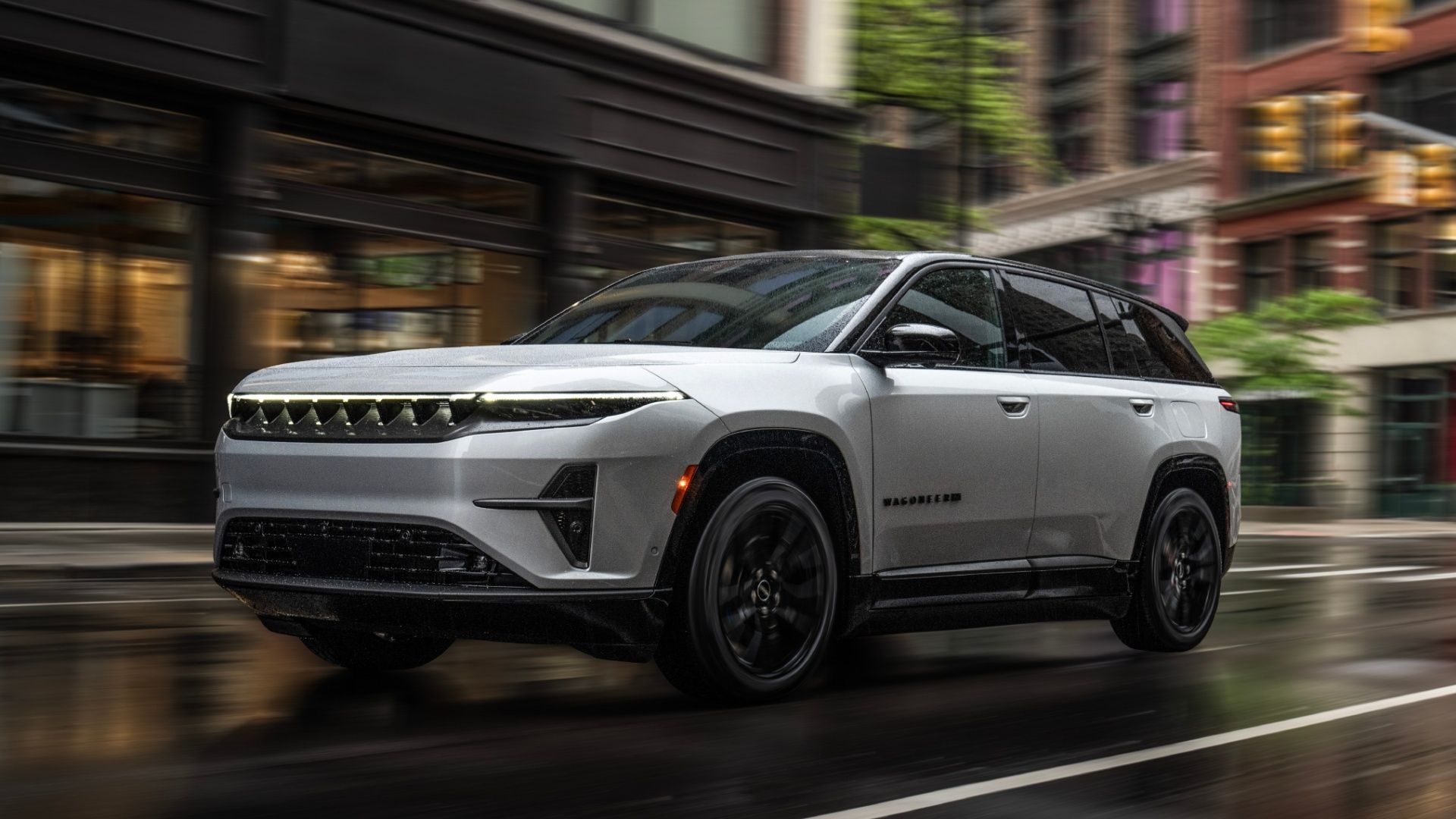
Related
Jeep Wagoneer S EV Debuts With 600 HP, 300+ Miles Of Range, And Loads Of Luxury
The Jeep Wagoneer S is the first fully electric vehicle in the brand’s US lineup and is set to roll out globally.
Speed Without Sacrificing Efficiency
It’s worth getting the advantages inherent to EVs out of the way early on, with the most obvious being able to drive right on by the gas pumps without a second thought. The Wagoneer S does this on the back of a 100 kWh battery pack, which can be charged from 20% to 80% in an impressive 23 minutes via a DC fast charger. Not the fastest we’ve seen, but still up there.
Another EV advantage is loads of power. In this case, it’s 600 horsepower and 617 lb-ft of torque. Combined with the brand’s lowest drag coefficient in history at 0.29, this all combines to give the Wagoneer S an impressive 300-plus stated miles of range. When also considering the fast charging times which should be replicated by highway charging stations, road trips may take a little bit longer, but will prove to be much more cost-friendly in the end than those in the Grand Cherokee Trackhawk would. Not to mention the additional benefits if you have a home charger, which ends the EV ownership nightmare.
Environmentally Friendly Beyond The Battery
While the environmental sustainability of electric vehicles is a hotly-debated topic, Jeep clearly went out of their way to make the Jeep Wagoneer S as sustainable and friendly as possible. One of the most impressive choices in this regard is Jeep’s choice to make the carpets out of recycled pre- and post-consumer products, helping to neutralize waste in both sectors of business. This philosophy extends beyond buzz words, however, with the entire vehicle covered in non-leather materials.

Related
How Vegan Leather Is Greenwashing The Automotive Industry
Isn’t “Vegan Leather” a contradictory term?
Part of the influence here stems from the car’s overall design philosophy, which is best summated by Stellantis Chief Design Officer Ralph Gilles’ claim during the vehicle’s reveal event in New York City that wood was “banned” from the vehicle. Gilles cited the company’s desire to have the vehicle appeal to a younger generation who doesn’t hold the material in as high regard, but there was surely some aspect of the decision influenced by a connecting theme of environmental friendliness and sustainability, which the Trackhawk would’ve had a difficult time meshing with in virtually every respect. But, at least the Trackhawk had an “eco” button on the dashboard, which may be the most useless button ever placed in a car.
Handles Every Way A Jeep Should And More
Yet despite this departure from gas-guzzling V8s and a new, environmentally-oriented design philosophy, the spirit of the brand’s preceding vehicles is vibrantly present in the Wagoneer S. One of the best examples of this is the vehicle’s various drive modes, which include Auto, Sport, Eco, Snow, and Sand, emphasizing the vehicle’s readiness for inclement weather and low traction off-roading. As if this wasn’t enough of a sign, Jeep also unveiled a Wagoneer S Trailhawk concept vehicle alongside the base Wagoneer S, and it even seems production friendly enough to hit the market sooner rather than later.
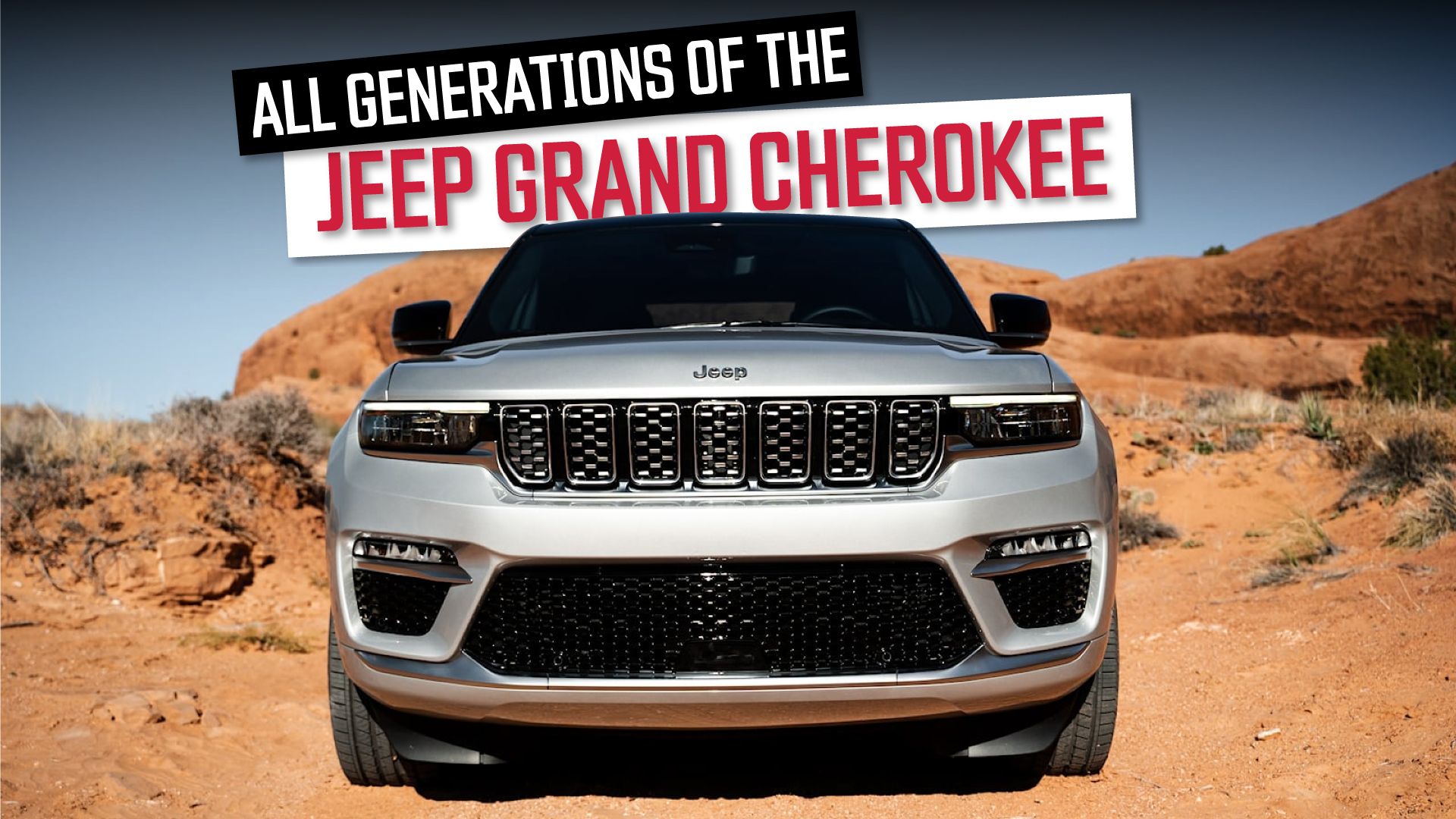
Related
Jeep Grand Cherokee Generations: Everything You Need To Know In One Place
Despite a humble start, one of Jeep’s most recognizable nameplates morph into a luxurious off-roader in various body sizes for the 21st century.
The Wagoneer S also has an inherent handling advantage in the form of its aforementioned heavy battery pack, which is fully integrated into the vehicle’s body. This helps to both lower the vehicle’s center of gravity, and to give it what Jeep claims to be a 35 percent increase in the body’s torsional stiffness over previous midsize Jeep models. While the Trackhawk may beat the Wagoneer S in the straights past 60, any lead it creates should be all but eliminated with each inside turn the Wagoneer makes.
Still A Wagoneer On The Inside…
As for the Wagoneer S’ interior, there’s unfortunately not much to say which couldn’t be said for the already existing Wagoneer family. Aside from the sustainability-minded differences mentioned above, the interiors are largely the same. 45 inches of usable screen space are distributed between the instrument cluster, main infotainment display, climate control display, and even a passenger screen display. The infotainment system is powered by UConnect 5, which is used by virtually every other vehicle which comes with an infotainment display setup under the brand’s name. One key difference which those with keen eyes will notice is that the vehicle comes with electric door releases only, meaning that manual latches on the interior and exterior have been replaced with soft-touch buttons. Generally speaking, however, this is the only major difference in the vehicle’s interior when compared to the rest of the Wagoneer family. Likewise, with Jeep interiors generally following the same philosophy even across models, the Wagoneer S is just as at home in the general Jeep brand as it is within its specific platform family.
…And Still A Jeep On The Outside
One of the most frustrating trends to come from the EV revolution thus far has been designers’ penchants for an obsession with futuristic design, space-ship-like looks, and, as a result, a very large departure from the looks the brand is typically known for. Jeep, thankfully, chose to go in a completely different direction by clearly prioritizing familiarity with the vehicle’s design, as highlighted above for the interior. On the outside, meanwhile, almost every classic Jeep design trademark can be found. An upright, seven-slot grille (which now lights up thanks to a lack of need for cooling functionality), 20-inch wheels, and a generally boxy design all make it clear to even the most casual of car owners that this is indeed a Jeep.

Related
Why The 2024 Jeep Gladiator Mojave Is Our Favorite Kind Of Jeep
Forget the Rubicon, the Mojave is more fun and easier to live with.
Yet the vehicle also boasts some unique features which distinguish it from its predecessors, with the most obvious being the lack of a tailpipe thanks to its full EV status. The next most obvious is the large rear wing which, when paired with a generally pinched greenhouse area (emphasized by a stretchy D-pillar clearly designed with drag coefficiency in mind), plays a major role in reaching the aforementioned 0.29 drag coefficient. Even with these slight changes, Jeep has succeeded tremendously in making sure its latest vehicle is as recognizable as any other, including the 2021 Jeep Grand Cherokee Trackhawk.

Add CarBuzz to your Google News feed.
Wagoneer S’ Price Is The Final Nail In the Trackhawk’s Coffin
However, even when considering all of the above advantages the Wagoneer S offers over the discontinued Grand Cherokee Trackhawk, it’s all for naught if the EV can’t compete with its gas-guzzling ancestor when it comes to the price tag. Likewise, it’s worth mentioning that there’s only one currently available trim level in the form of the now reservable Jeep Wagoneer S Launch Edition. This retails at just under $72,000 according to Jeep’s official website, which includes any transportation needed to allow the purchaser to reasonably pick up their vehicle. While far from inexpensive, it’s something of a bargain among electric vehicles specifically, beating out the $74,305 sticker price for the 2024 Kia EV9 while still being just as, if not more, heavily lauded by industry experts.
Yet the primary focus here is the Grand Cherokee Trackhawk, and while those dreading the changing times may be saddened to hear it, the Wagoneer S manages to beat out the 2021 Grand Cherokee Trackhawk’s brand-new MSRP of $91,665 by a large margin. Considering prospective purchasers are getting just as, if not, a more enjoyable a 0-60 experience than the Trackhawk, it’s clear that there’s a new king of Jeeps in town even before the launch of the aforementioned Wagoneer S Trailhawk concept car. And this time, no one will hear it coming until it’s already too late.

